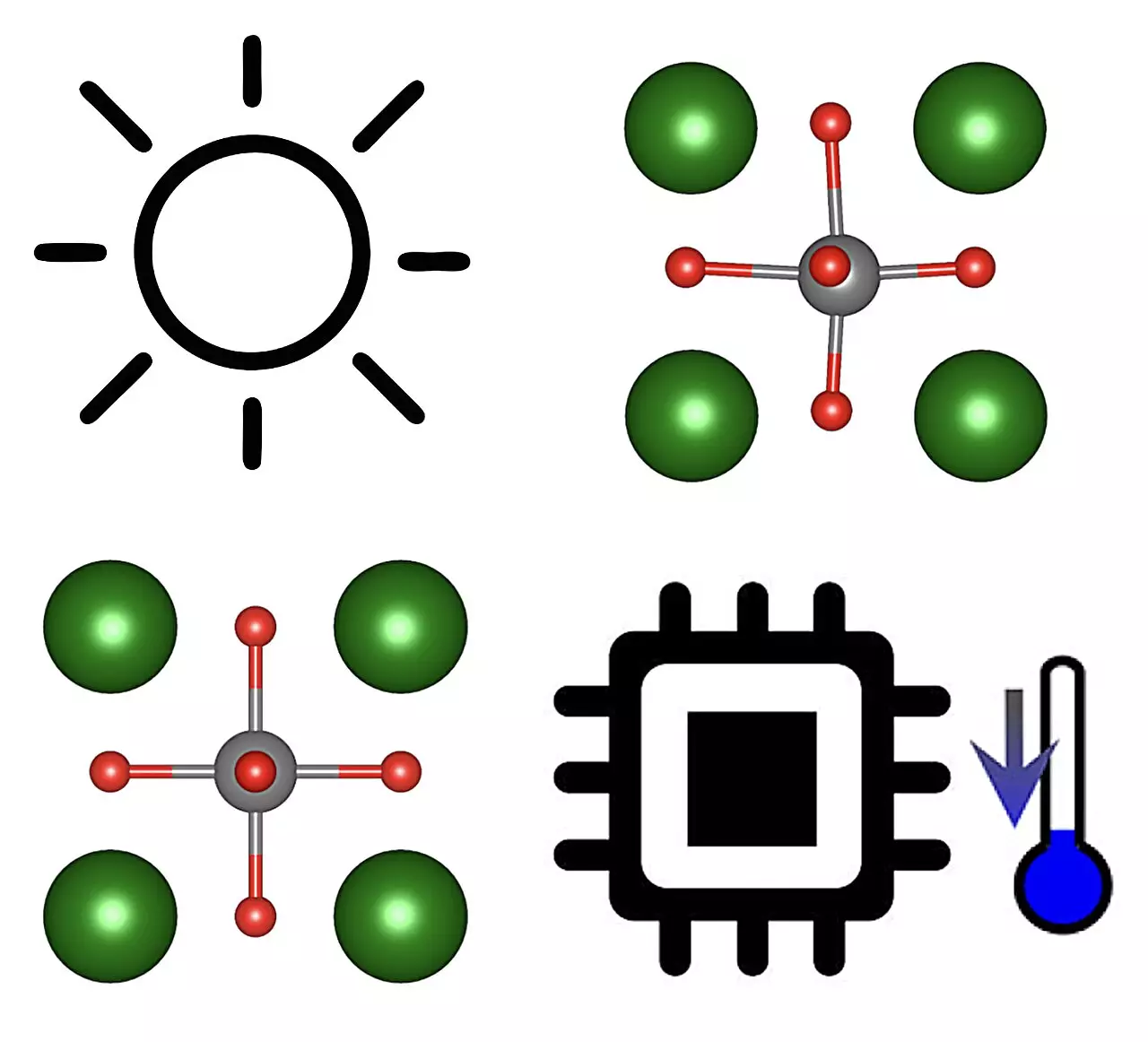In recent years, the demand for energy-efficient cooling solutions has prompted an exploration of alternative technologies that could reshape refrigeration as we know it. Traditional cooling methods, which heavily rely on gases and liquids for heat transfer, not only consume considerable energy but also release greenhouse gases, contributing to environmental concerns. An innovative answer to these challenges lies in solid-state cooling, a technique that leverages the intrinsic properties of solid materials to achieve refrigeration without the logistical issues of fluid-based systems. The latest research from the Institut de Ciència de Materials de Barcelona and Universitat Politècnica de Catalunya highlights the potential of ferroelectric materials, particularly the photocaloric (PC) effects present in them, to revolutionize this field.
Photocaloric effects rely on the ability of some materials to undergo phase transitions when exposed to light, altering their thermal properties. This phenomenon differs from more established caloric effects such as magnetocaloric and electrocaloric effects by offering a significantly wider operational temperature range. Traditional caloric materials might operate effectively only within a narrow temperature band—generally about 10K—while the theoretical work presented by researchers suggests that photocaloric effects can be beneficial across intervals as broad as 100K. This distinctive capability could pave the way for cooler systems that not only operate more efficiently but also exhibit adaptability in various thermal environments.
Claudio Cazorla, a co-author of the recent research published in *Physical Review Letters*, emphasized the dual inspiration behind this study—existing knowledge of phase transitions induced by light alongside a keen interest in solid-state cooling technologies. They aimed to explore the untapped potential of ferroelectric materials like barium titanate (BaTiO3) and potassium niobate (KNbO3), which could facilitate the much-desired cooling without the conventional disadvantages associated with other caloric effects.
The focus on ferroelectric materials is significant because these substances exhibit spontaneous electric polarization, allowing for substantial entropy alteration upon undergoing phase transitions. This attribute allows researchers to conceptualize a highly efficient PC cycle, allowing significant thermal energy manipulation. As a result, leveraging light to instigate these transitions can transform a high conductivity state into a low conductivity state—an eventuality that Cazorla believes holds a myriad of applications in energy-efficient cooling solutions.
One of the standout advantages of employing photocaloric effects lies in the simplicity of the required experimental setup. With the capability to induce significant temperature changes via light absorption, the need for complicated electrode systems is eliminated, simplifying both the design and manufacturing processes of devices that utilize these effects. This presents a prime opportunity for miniaturization, particularly in applications where space and energy efficiency are critical, such as the cooling of microelectronic components and CPUs.
As our reliance on technology grows, the need for improved thermal management solutions becomes even more pressing. The ability to maintain optimal operating temperatures not just prolongs the lifespan of electronic devices but also enhances their performance, making solid-state cooling using photocaloric effects an attractive frontier for future exploration.
The research team’s theoretical predictions about the promising attributes of photocaloric effects in ferroelectrics lay a strong foundation for future investigations. The next step will involve experimentally validating these theories to uncover practical applications. Concurrently, researchers are broadening their scope, delving into other material families that could exhibit light-induced phase transitions, potentially elevating solid-state cooling’s versatility even further.
Moreover, the implications of these discoveries extend beyond mere temperature regulation. As researchers consider quantum technologies requiring ultra-low temperatures, this could also inform the development of next-generation cooling systems that enable groundbreaking advancements in various fields, from computing to cryogenics.
The potential of photocaloric materials as an innovative avenue for solid-state cooling offers a glimpse into a more sustainable future for refrigeration technologies. With continued exploration and experimental validation, these findings could lead to practical advancements that mitigate energy consumption and environmental impact. As the field of cooling technology evolves, the spotlight will undoubtedly be on how photocaloric effects can redefine traditional systems, paving the way for a cleaner, more efficient world.

